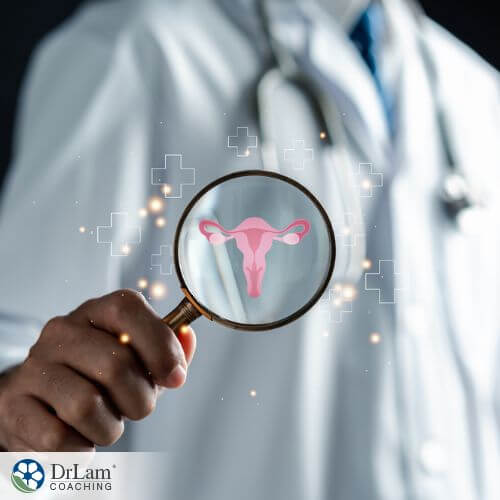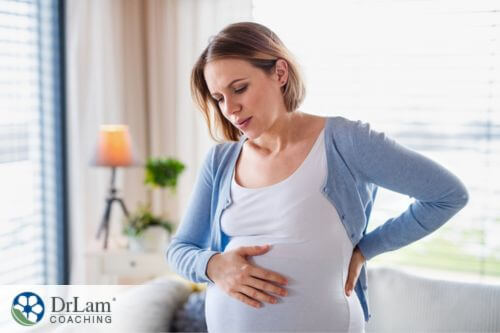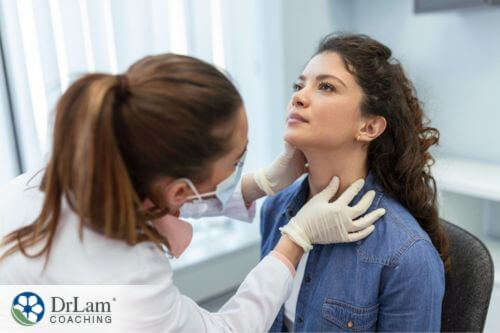 Estrogen, progesterone, and testosterone are the primary reproductive hormones. They play a key role in fertility and sexuality. These hormones are crucial elements in several processes, including menstruation, menopause, puberty, pregnancy, and sperm production, among others. These hormones are primarily produced in the female ovaries and male testes. However, other reproductive hormones are produced by the pituitary gland, and they can be stored in it and stimulated by it as well. Reproductive hormones play a major role in your life and have a large impact if they are imbalanced.
Estrogen, progesterone, and testosterone are the primary reproductive hormones. They play a key role in fertility and sexuality. These hormones are crucial elements in several processes, including menstruation, menopause, puberty, pregnancy, and sperm production, among others. These hormones are primarily produced in the female ovaries and male testes. However, other reproductive hormones are produced by the pituitary gland, and they can be stored in it and stimulated by it as well. Reproductive hormones play a major role in your life and have a large impact if they are imbalanced.
The estrogen hormones estradiol, estriol, and estrone are critical in normal sexual and reproductive development in women. A woman's ovaries produce most estrogen hormones, but the adrenal glands and fat cells also produce small levels of estrogen hormones as well. Men, while they make estrogen as well, have lower levels than women. Typically, when a woman experiences low estrogen levels, it’s usually the result of menopause or having the ovaries surgically removed.
Estradiol, also known as Oestradiol (E2), is the most dominant of the estrogen hormones. It plays an essential role in the female reproductive system and is usually prominent in women of childbearing age. Estradiol is also present in men, but there’s a lower level of the hormone than in women.
Also, this hormone is critical in maintaining the female reproductive system. Estradiol levels jump during a female’s menstrual cycle. This functions to mature and release the egg and thicken the uterus lining which supports the implantation of the fertilized egg.
Furthermore, as a woman ages, the production of this hormone decreases. It drops even more in menopause.
The role of this hormone in men is to aid in maintaining bone health, producing nitric oxide, and regulating important brain functions.
Women with elevated levels of estradiol may experience certain symptoms such as acne, constipation, depression, weight gain, menstrual issues, and decreased libido. Furthermore, a high level of this estrogen hormone can increase your risk of breast cancer, uterine cancer, and cardiovascular disease.
High levels of estradiol in men can cause a decline in sperm production, diminished sperm quality or motility, or the development of female characteristics. In some instances, sperm can cease altogether.
Low levels of estradiol in the body can cause:
Estriol is another of the estrogen reproductive hormones, but it’s a weak estrogen hormone. It’s also called oestriol, or E3. It’s a minor female sex hormone that is primarily detectable in pregnant women who produce a high amount of it. The function of this hormone is to help maintain not only a healthy uterus but also a healthy unborn baby. Additionally, estriol prepares a female’s body for labor, birth, and breastfeeding.
 A pregnant female who is experiencing too high or too low estriol levels may have problems with either the unborn baby or the pregnancy. For instance, low levels of estriol may indicate an issue with the placenta or a problem with the baby’s health, such as Down syndrome.
A pregnant female who is experiencing too high or too low estriol levels may have problems with either the unborn baby or the pregnancy. For instance, low levels of estriol may indicate an issue with the placenta or a problem with the baby’s health, such as Down syndrome.
Estriol levels begin to climb around the eighth week of pregnancy and gradually climb as the pregnancy progresses. Roughly three weeks before birth, estriol levels climb to their highest. At this point, a woman may go into labor. If you experience a sudden increase in estriol levels before the 37th week of your pregnancy, this could indicate that you’re at risk for premature labor.
However, if your estriol levels are low just before birth, you may need assistance in labor. This may indicate that it will be necessary for healthcare providers to trigger labor artificially.
This hormone is also referred to as oestrone. It’s not only produced in the ovaries but also in the adrenal glands and adipose tissue. Estrone tends to be present at higher levels in postmenopausal women. Though the weakest of the estrogens, this hormone is important in female sexual development and function.
It’s still unknown how high or low estrone levels affect the body. In instances where a woman has breast cancer and a man has prostate cancer, estrone levels could potentially increase. As such, estrone levels are best monitored in these individuals. Obese women usually produce excess estrone from their fatty tissue.
Low levels of estrone in women can cause the development of osteoporosis. It can also lead to menopausal symptoms, such as hot flashes, fatigue, low sex drive, and depression. Low estrone levels may be the reason why some postmenopausal women still struggle with these symptoms.
The steroid hormone progesterone is part of a class of hormones known as progestogens. As one of the reproductive hormones, progesterone is produced by the corpus luteum. This is a temporary endocrine gland produced by the female body following ovulation. It’s during the second half of the menstruation cycle that this occurs.
Today, there are synthetic steroid hormones called progestins that have progesterone-like properties. Contraceptives like birth control pills are often developed from a combination of progestins and some other hormone. Also, progestins are beneficial in ameliorating common menopausal symptoms.
Progesterone plays a key role in the menstrual cycle by preparing the endometrium by thickening the uterine lining for the implantation of a fertilized egg. Additionally, it prevents the uterine muscles from contracting, which could trigger the body to reject the fertilized egg. Ovulation ceases when high levels of progesterone are produced. In the instance where pregnancy doesn’t occur, the corpus luteum degrades and decreases progesterone levels. This process triggers menstruation. Furthermore, another role of this hormone is to aid in preparing the breasts to produce milk.
One of the main problems for women who have low progesterone levels is that they tend to have abnormal menstrual cycles. Many have difficulty conceiving because the ideal environment for implantation and growth is lacking. Some women may still end up getting pregnant but are often at an increased risk for miscarriage or preterm birth. Think of it as not having enough of the reproductive hormones, in this case, progesterone, to sustain the pregnancy.
Some of the signs of low progesterone levels include:
 Unusual uterine bleeding
Unusual uterine bleedingOf the reproductive hormones, testosterone is the primary one in men. The testicles produce testosterone which is essential in shaping male physical features. These features include deepening voice, facial hair growth, building muscles, and penis and testes growth, among other features. Additionally, this hormone is important in sperm production and reproduction.
Women also produce testosterone, but in much lower levels than males.
Testosterone levels fluctuate from hour to hour and day to day. Levels are usually at their highest in the morning and lowest at night.
Testosterone levels can become low and remain low. Lower testosterone levels can be a temporary issue caused by factors such as excess exercise, poor nutrition, or serious ailment. When testosterone levels are unbalanced for an extended period, certain issues may arise, including:
While testosterone levels can reach in excess of normal levels, it happens less frequently. Of note is that high testosterone levels in young males can lead to early puberty -before 9 years of age.
Your physician may recommend adopting a healthy lifestyle of regular daily exercise and a balanced diet of nutrient-rich foods to assist in maintaining normal testosterone levels. A blood test can be done to determine your testosterone level.
Anti-Müllerian Hormone (AMH), as one of the important reproductive hormones, plays a key role in fertility and reproductive development. It’s vital during pregnancy for the development of the fetus, and specifically, for a male fetus’ reproductive development.
Before birth, AMH is produced in the fetus’ ovaries and testes. At 8 weeks following conception, a fetus has a Müllerian (female) and a Wollfian (male) duct. This can either develop into the male or female reproductive system depending on the fetus’ chromosome type- XY(male) or XX(female).
A fetus with XY (male) chromosomes will make AMH and subsequently, the Müllerian ducts will vanish. Testosterone production helps with developing the male reproductive system. In contrast, in a fetus with XX (female) chromosomes, the Wollfian duct disappears and the Müllerian duct develops to form the female reproductive system.
Furthermore, AMH functions in the ovaries to promote the development of follicles. These store and support eggs prior to fertilization. The more ovarian follicles produced, the more AMH will be present.
In male fetuses, low levels of AMH can prevent the Müllerian duct from disappearing. In this case, the reproductive system can go through abnormal development. This can lead to a rare condition called Persistent Müllerian duct syndrome. Low sperm count or the absence of sperm are symptoms of this condition.
In females, low levels of AMH may be linked to a condition called primary ovarian insufficiency (POI).
Furthermore, high levels of AMH may result from polycystic ovarian syndrome (PCOS).
 Of the reproductive hormones that fall in the androgens category, dihydrotestosterone is known for its potent androgenic properties. This androgen hormone is essential during puberty, triggering puberty in boys and aiding in the development of adult male features. It’s produced by a process that converts testosterone into this androgen.
Of the reproductive hormones that fall in the androgens category, dihydrotestosterone is known for its potent androgenic properties. This androgen hormone is essential during puberty, triggering puberty in boys and aiding in the development of adult male features. It’s produced by a process that converts testosterone into this androgen.
Dihydrotestosterone causes genital growth and pubic hair growth. Additionally, its combination with testosterone in the body can cause sexual desires and conduct.
While women also produce dihydrotestosterone, less is known about its function in women. Limited research indicates that this androgen can cause the growth of pubic hair in girls following puberty.
Overproduction of testosterone can cause men as well as women to have elevated levels of dihydrotestosterone. A high amount of the hormone in men can lead to male pattern baldness and an enlarged prostate. Meanwhile, women with an excess of this hormone may experience an overgrowth of body and facial hair, adult acne, and menstrual issues.
If you have an excess of the hormone, your doctor may recommend a dihydrotestosterone inhibitor to restore the balance of this hormone in your body.
Low dihydrotestosterone levels are primarily problems for babies and prepubescent males, who may not experience normal body hair growth or genital development during puberty because of it.
The corpus luteum is responsible for producing relaxin, a lesser-known reproductive hormone. While this hormone is produced in the ovary, during pregnancy, it’s secreted by the placenta as well as the uterine lining. In men, the prostate gland secretes relaxin. However, circulation of it in the blood is absent in men.
Relaxin plays an essential role in the female reproductive process. Levels climb following ovulation and relax the uterine wall in preparation for conception. In the instance pregnancy doesn’t occur, the amount of relaxin in a woman decreases until the new menstrual cycle.
However, if pregnancy is successful, levels of the hormone increase during the 1st trimester and helps with the implantation of the fertilized egg and the development of the placenta growth. Furthermore, relaxin prevents contractions and, by extension, premature childbirth.
Studies indicate that high levels of relaxin may contribute to early delivery in pregnant women by rupturing the membranes, but this has not yet been proven. In contrast, low levels of relaxin may lead to scleroderma, which is a condition that’s characterized by thickened and hardened skin.
Hormones regulate dozens of reactions in the body and they play a key role in how your body responds to stress through the NeuroEndoMetabolic (NEM) Stress Response. The NEM is comprised of six circuits of related organ systems that distribute the responsibility of managing stressors. The Hormone Circuit includes the adrenal glands, thyroid glands, and reproductive organs. They are involved in bodily processes that include but are not limited to metabolism, energy production, and reproduction.
When you experience stress, the adrenal glands are the first responders, releasing the hormone cortisol, which shares precursor hormones with several reproductive hormones. When stress is chronic, however, cortisol levels are high and can deplete needed resources for the production of other reproductive hormones, leading to hormone imbalance and Adrenal Fatigue Syndrome (AFS).
Compromised adrenal function can in turn reduce thyroid function, which partly involves regulating the total stress response speed. Decreased thyroid function can cause fatigue, which can cause reproductive processes to decline. This imbalance of the hormone circuit can affect the production of reproductive hormones, as well as libido, a woman’s menstrual cycle, and fertility.
There are a few ways that your physician may recommend addressing hormone imbalance.
 Identify the Root Problem: First, try to find out the dominant organ that is the source of the problem. Is there a problem with the thyroid, for instance? Fixing the thyroid issue could, in turn, help address the hormone problem.
Identify the Root Problem: First, try to find out the dominant organ that is the source of the problem. Is there a problem with the thyroid, for instance? Fixing the thyroid issue could, in turn, help address the hormone problem.Reproductive hormones are key to sexual development and fertility. Some of the most important reproductive hormones are estrogen, progesterone, testosterone, dihydrotestosterone, and relaxin. Most of these are especially important for males or females at different stages of their reproductive development. In some cases, hormones can become imbalanced, being too high or too low. If you suffer from hormone imbalance and are experiencing associated symptoms, speak to your doctor.
If you are concerned about hormone imbalance and would like assistance in determining natural ways to prevent it, the team at Dr. Lam Coaching can help. We offer a free** no-obligation phone consultation at +1 (626) 571-1234 where we will privately discuss your symptoms and various options. You can also send us a question through our Ask The Doctor system by clicking here.
The main reproductive hormones are estrogen, progesterone, testosterone, AMH, and relaxin. These hormones are instrumental in sexuality, sexual development, and fertility. Hormone imbalance can occur when high or low levels of a particular sex hormone are experienced. Depending on your physician's recommendation, this issue may be addressed in several ways.
